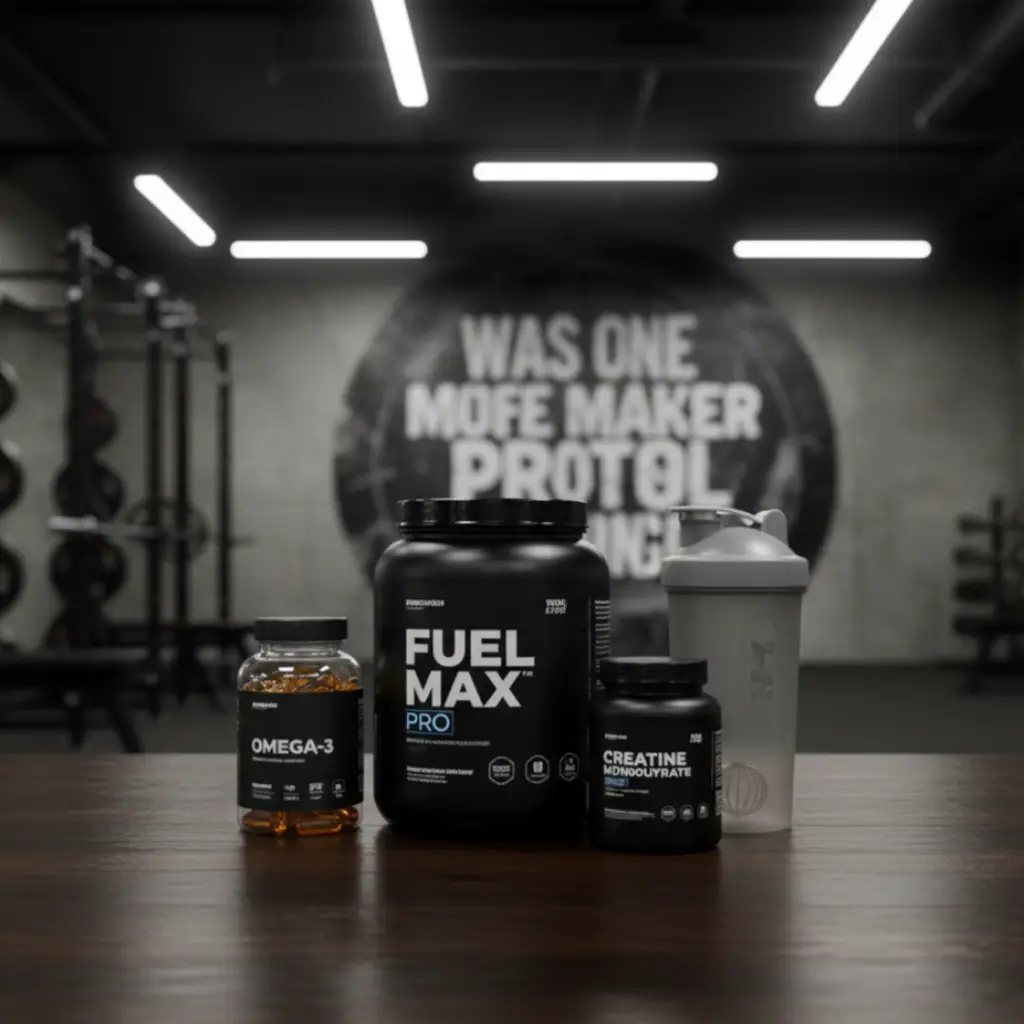Strength training recovery is just as important as the workout itself. Without proper rest, nutrition, and smart recovery practices, your muscles won’t repair or grow effectively. Recovery after strength training includes rest days, stretching, nutrition, and sometimes supplements. Whether you’re a beginner or seasoned lifter, knowing how to recover properly will help you build strength safely and consistently.

Table of Contents
Importance of Recovery After Strength Training
Why Rest Days Are Essential for Muscle Growth
Strength training creates tiny tears in muscle fibers. Growth only happens when those fibers repair, and that process requires rest days. Training without breaks increases fatigue, stalls progress, and raises injury risk. Rest isn’t laziness—it’s an active part of building muscle.
Tip: Schedule at least 1–2 rest days weekly, especially after heavy compound lifts or high-intensity full-body workouts.
👉 For guidance on structuring your sessions, check our Beginner Strength Training Plan.
The Science Behind Muscle Recovery Time
Muscles recover through protein synthesis, hormone regulation, and inflammation control. Recovery speed depends on:
- Age: Older lifters need more time.
- Training load: Heavy sessions demand longer rest.
- Lifestyle: Sleep, hydration, and diet directly affect repair.
On average, recovery takes 24–72 hours, but that window extends with age or poor recovery habits.
Post Workout Recovery Techniques
Post Workout Stretching and Mobility Drills
Stretching improves circulation, reduces stiffness, and protects joints.
- Dynamic stretches (leg swings, arm circles) before training prep muscles.
- Static stretches (hamstring stretch, child’s pose) after training aid relaxation.
Mobility drills keep joints healthy, especially shoulders, hips, and ankles. Pair stretching with foam rolling to reduce soreness.
Active Recovery vs. Complete Rest Days
Active recovery—like walking, cycling, or yoga—improves blood flow without adding stress. It speeds up recovery while keeping you active. Complete rest is better after exhausting sessions or when soreness lingers.
👉 If you prefer bodyweight training on light days, read our Bodyweight Strength Training guide.
Nutrition for Strength Training Recovery
Protein and Carbohydrates for Muscle Repair
Protein provides amino acids needed for rebuilding fibers. Aim for 1.6–2.2 g/kg body weight daily.
Carbohydrates restore glycogen stores, fueling your next workout. Pair protein with carbs post workout for maximum benefit.
Post Workout Meal Example:
- Grilled chicken, rice, and vegetables
- Whey protein shake with a banana
👉 Learn how lifting helps fat loss with Strength Training for Weight Loss.
Hydration and Micronutrients for Recovery
Water supports nutrient transport and joint health. Aim for at least 2–3 liters daily.
Micronutrients like magnesium, potassium, and vitamin D are essential for muscle function. Anti-inflammatory foods—berries, salmon, leafy greens—also reduce recovery time.
Muscle Recovery Supplements
Post Workout Recovery Supplements Backed by Science
- Whey protein: Rapid amino acid delivery.
- Creatine: Supports ATP production and strength.
- Omega-3s: Reduce inflammation and joint pain.
- Electrolytes: Prevent cramping and dehydration.
Muscle Recovery Supplements to Use With Caution
Glutamine, antioxidants, and trendy “detox” drinks often lack scientific backing for recovery. Supplements are helpful, but they can’t replace proper sleep, diet, and training balance.

Recovery Strategies by Age
Muscle Recovery Time by Age: What Research Shows
Recovery naturally slows with age:
| Age Range | Average Recovery Time |
|---|---|
| 20s–30s | 24–48 hours |
| 40s–50s | 48–72 hours |
| 60+ | 72+ hours |
Exercise Recovery After 40 and Beyond
Hormonal changes and slower tissue repair increase recovery needs. Focus on:
- Extra rest days
- Joint-friendly lifts (dumbbells, machines)
- Consistent mobility training
👉 Learn specific adjustments in Strength Training for Women Beginners.
Practical Muscle Recovery Tips for Lifters
How to Recover Sore Muscles Faster
- Heat therapy: Improves blood flow.
- Cold therapy: Reduces inflammation.
- Foam rolling: Relieves tight fascia.
- Massage: Promotes circulation.
Sleep and Stress Management for Recovery
Sleep is the most powerful recovery tool. Aim for 7–9 hours nightly. Poor sleep slows protein synthesis and increases cortisol, delaying repair.
Meditation, breathwork, and light evening walks reduce stress for better recovery.
Common Mistakes in Recovery After Strength Training
Skipping Rest Days or Doing Too Much Too Soon
Training every day without breaks leads to overtraining. Symptoms include fatigue, irritability, and stalled progress. Balance volume with structured recovery.
👉 Prevent mistakes with our guide on Progressive Overload for Beginners.
Neglecting Recovery Tools and Habits
Recovery is more than sleep—it includes hydration, mobility, and proper nutrition. Ignoring these basics limits long-term strength gains.
👉 Read about Common Strength Training Mistakes.

Advanced Recovery Methods for Strength Athletes
Contrast Therapy, Cryotherapy, and Sauna Use
- Cold plunges: Reduce inflammation
- Sauna sessions: Boost circulation
- Contrast therapy: Alternating hot and cold increases recovery speed
Research shows benefits, but these methods supplement—not replace—core recovery strategies.
Tracking Recovery With Technology
Wearables can track heart rate variability (HRV) and sleep quality. HRV indicates readiness for training. Adjust load when recovery scores are low.
Conclusion: Key Takeaways for Strength Training Recovery
Strength training recovery isn’t optional—it’s the foundation of muscle growth. Use rest days, proper nutrition, and consistent sleep to repair and grow stronger. Adjust recovery strategies as you age, and avoid shortcuts that skip the basics. Supplements and advanced tools are helpful but secondary to sleep, food, and smart training. Build recovery into your plan, and progress will follow.
👉 For balanced programming, read Full Body Strength Training.
FAQs
How to recover muscles faster after workout?
Prioritize protein-rich meals, hydration, stretching, and 7–9 hours of sleep. Active recovery like walking helps.
Muscle recovery time by age?
20s–30s: 24–48 hours. 40s–50s: 48–72 hours. 60+: 72+ hours.
Muscle recovery supplements?
Creatine, whey protein, omega-3s, and electrolytes are effective.
Post workout recovery supplements?
Whey protein, creatine, and simple carbs taken within 30–60 minutes after training support repair.
Exercise recovery after 40?
Extra rest, mobility, and joint-friendly exercises are essential.
How to recover sore muscles faster?
Foam rolling, warm baths, protein intake, and proper hydration.
How long does it take for muscles to repair after workout?
24–72 hours depending on age, training, and lifestyle.
Muscle recovery time chart?
See chart above for age-related recovery times.
Visit my Instagram account for more
